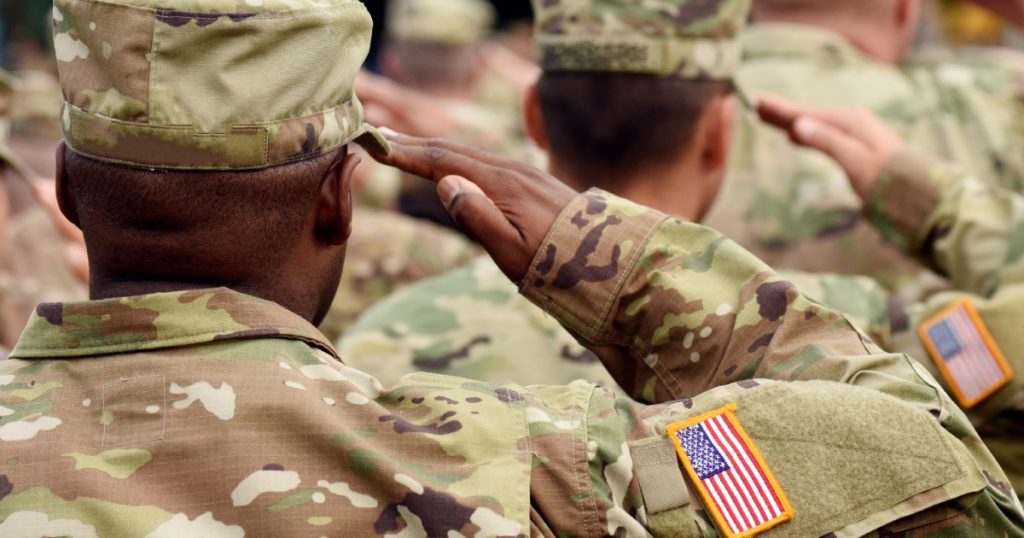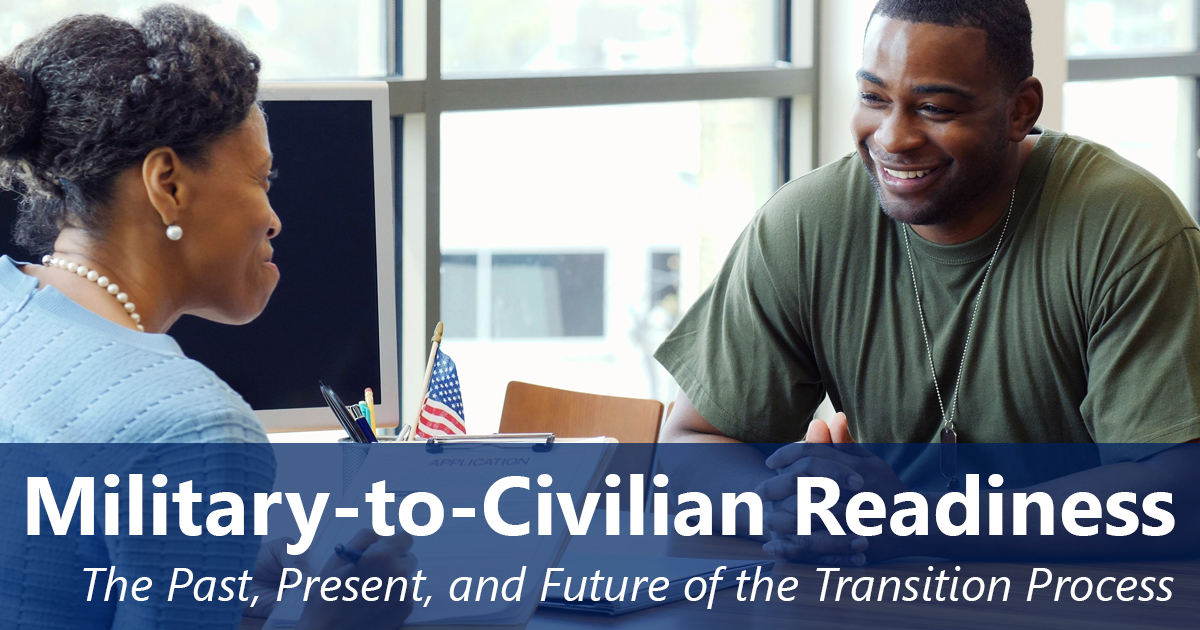Table of Contents
For the nearly 200,000 service members who transition out of the military each year, the change can be a stressful and uncertain time. The Transition Assistance Program (TAP) was created to provide veterans and family members with the tools they need to succeed in civilian life. There are eight steps in the program.
8 Steps in the Transition Assistance Program
- Start the Process 365 Day Before Transition
- Attend counseling with TAP Counselor
- Create an Individual Transition Plan (ITP)
- Attend the DoD Pre-Separation Training Day
- Receive the VA Services and Benefits Brief
- Receive the Department of Labor (DOL) One-Day Brief
- Choose a Track
- Attend the Capstone Event
Through in-person and online classes, military members gain the knowledge and skills necessary to transition successfully. The training is a cooperative effort among the Department of Labor, Department of Defense, Veterans Administration, Small Business Association, and the Office of Personnel Management. Transitioning service members learn about civilian employment, educational benefits, health care, financial planning, and other basic transition topics.
The transition from military service to civilian life also impacts spouses and family members. For this reason, TAP is available to both service members and spouses.
What Is the Transition Assistance Program?
The Transition Assistance Program (TAP), established by the National Defense Authorization Act of 1990, helps transitioning service members leave active duty and start a new civilian life. The program was launched in response to significant military drawdowns in the 1980s and the return of service members from Desert Storm.
The program underwent many improvements in 2011 through the Veterans Opportunity to Work (VOW) to Hire Heroes Act. Some of those improvements include adding more in-depth career preparation, customizing individualized plans, and making the program mandatory for all exiting service members.
TAP is available to every Soldier, Airman, Marine, Sailor, and Coast Guardsman. Eligibility includes National Guard and Reserve Component personnel returning from active duty. The primary TAP curriculum is the same for each service branch, although each may add specific content to suit their needs.
Fundamental topics covered by TAP include employment, education, health care, benefits, and financial planning. Attendees will set post-service goals depending on whether they seek employment, further education, or want to start their own business. Most importantly, veterans receive a wealth of resources available to them that they can use after they leave the military and through the entire transition process.
A curriculum for military spouses is also available, such as the Transition Employment Assistance for Military Spouses (TEAMS), which assists military spouses through a career skills program. Spouses can contact their local Family Readiness Center for information on resources available to them.
8 Steps of the Transition Assistance Program
There are eight steps that a transitioning service member will go through when participating in the Transition Assistance Program.
1. Start the Process 365 Days Before Transition
Eligible transitioning service members will begin the transition process no later than 365 days before their separation or retirement. Starting the program a full year before separation gives service members time to gather transcripts and documents needed for military skills translation and resume creation. It also provides service members time to consider what personal goals they have for their civilian life.
For unplanned separations, the process should begin as soon as possible.
2. Attend Counseling with TAP Counselor
Pre-separation counseling is the formal start of the transition process. TAP counselors provide an overview of TAP program goals to set expectations. Service members will complete self-assessments to determine their individual needs unique to their transition. This assessment will be the foundation of the Individual Transition Plan (ITP).
3. Create an Individual Transition Plan (ITP)
After the individualized initial counseling, veterans are better equipped to prepare their Individual Transition Plan (ITP). The transition process looks different for each service member. Some will enter employment immediately. Some seek higher education. Still others will move to a new location. Each of these individual goals will be mapped out in the service member’s ITP.
4. Attend DoD Pre-Separation Training Day
The next step in the transition process is to attend DoD pre-separation training, also known as DoD Transition Day. Service members will begin taking an active role in translating their military skills and experience into language easily understood by civilian employers.
During the Military Occupational Code Crosswalk, they will document and translate military skills into ones they will use in the civilian sector. Preparing resumes, gathering training and certification documents, and identifying educational gaps to their post-transition goal are all completed on this training day.
Additionally, service members attend financial planning training. This training is valuable for veterans who will experience a less systematic pay system than they have become accustomed to during their military service.
Another component of this training is “Manage Your Transition,” where service members learn how to deal with all the challenges and stresses from civilian transition. General organizational skills, stress management, and realistic expectations will aid in the transition to civilian life.
5. Receive the VA Services and Benefits Brief
The Department of Veterans Affairs (VA) conducts a pre-separation briefing to inform transitioning service members about eligibility requirements and application procedures related to benefits offered through their organization. These benefits include educational, veterans disability benefits, burial, health, housing, and job placement assistance.
Service members are trained on the application process and will have the opportunity to get all their questions answers. They will also learn about the appeals process, which has recently been revamped with the Appeals Modernization Act. The VA services and benefits brief will prepare the transitioning service member to take full advantage of the wide range of VA benefits available to them after leaving active duty.
6. Receive the Department of Labor (DOL) One-Day Brief
One of the most significant and immediate challenges a service member faces after leaving military service is finding employment. The DOL one-day brief equips veterans with the skills and tools they need to enter the civilian workforce. Trainers help veterans translate their military skills to language that civilian employers understand and prepare resumes and cover letters. This training also helps transitioning service members discover their career goals and identify any higher education requirements needed to be competitive in the civilian workforce.
7. Choose a Track
At this point in the Transition Assistance Program, service members will choose a specific track for a two-day workshop according to their post-transition goal. There are four options: DOL employment track, DOL vocational track, DoD education track, or Small Business Administration Entrepreneurship track. Participants must choose one and may complete multiple tracks if they so choose. Instead of assuming each veteran will want to seek traditional employment after military service, these specialized tracks let veterans choose a variety of options to fit their individual career goals.
8. Attend the Capstone Event
The Transition Assistance Program officially wraps up with a capstone event that reviews all the knowledge transitioning service members have gained along with the individual transition plan. Commanders use this capstone event to verify that military personnel have been adequately trained and are prepared to handle the challenges of the transition process. The capstone event happens no later than 90 days before separation from military service.
What Is DTAP?
The Disabled Transition Assistance Program (DTAP) is a program available to disabled veterans and service members discharged due to their disability. DTAP is an extension of the Transition Assistance Program that further enhances support to disabled veterans. The focus of DTAP is to assist disabled veterans in receiving disability compensation and overcoming challenges to education or employment they may face due to their disability.
Veterans get briefed on VA’s Vocational Rehabilitation and Employment (VR&E) program, which can help them obtain new skills, find work, or apply for education. The VR&E program can also help disabled veterans communicate with employers about accommodations needed to allow the veteran to return to work.
Training occurs in a group setting. Virtual briefings are available for service members discharged through the Integrated Disability Evaluation System (IDES) or hospitalized.
What Is the BDD Program?
Prompt receipt of disability compensation benefits can help to lessen the financial burden that disabled veterans face after military service. The Benefits Delivery at Discharge (BDD) program allows eligible transitioning service members to apply for disability compensation while still on active duty. Claims must be filed between 180 and 90 days before separation with all supporting documents. Filing the disability claim before leaving active duty gives the VA time to schedule exams, review all claims information, and make their decision before the separation date.
To be eligible to file your claim through the BDD Program, you must know your separation day, file between 180 and 90 days before the separation date, and be available for VA exams for 45 days from the filing date. If you are seriously injured, terminally ill, or awaiting discharge while hospitalized, you are ineligible for the BDD Program.
How Can You Contact Someone from TAP?
Transitioning service members should consult their installation’s Transition Assistance Office for questions. TAP counselors will provide service members with several contact points to reach out to for assistance as they continue through the transition process to civilian life. Service members should safeguard this information and keep all reference material handy because specific issues may not come up for months or years after leaving military service.
Veterans who have already left active duty and spouses can also access the TAP curriculum online. You can register through the Transition Training Portal. The DoD Tap website is a great place to start your search for any questions you may have after you have left your installation and are in the process of your civilian transition.
Transition Assistance Program
The Transition Assistance Program exists to assist transitioning service members as they leave military service. TAP is a collaborative effort of several agencies, each of which conducts training according to its area of expertise. Service members progress through eight steps of the program, including counseling, assessment and planning, and training.
Some of the main topics that attendees will learn about are VA benefits, job search skills, and higher education attendance. Transitioning service members will develop an individual training plan to outline steps to reach their specific post-transition goals. Along with the ITP, veterans will have a wealth of resources at their disposal to contact throughout their entire transition process as they encounter new challenges.
Disabled veterans may also be eligible for DTAP and the BDD Program to enhance their support during the civilian transition. DTAP helps disabled veterans to apply for benefits, obtain new skills, or make job accommodations to overcome challenges they face in the civilian workforce due to their disabilities. The BDD Program allows eligible transitioning service members with service-connected disabilities to submit a claim for VA disability compensation while still on active duty to receive a decision by their separation date.
The transition from military service to civilian life can be stressful for service members and their families. Participation in the Transition Assistance Program helps reduce stress by equipping veterans with the skills and information they need to achieve their post-transition goals.




